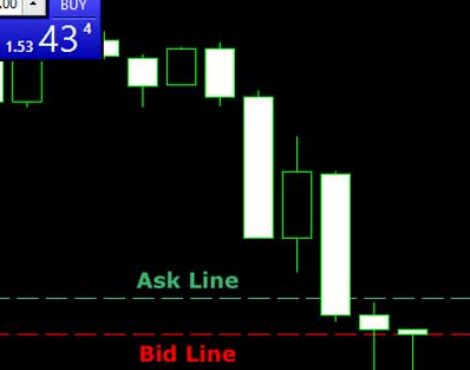The world of trading is vast and varied, with opportunities in both forex and cryptocurrency markets. One key factor that traders must consider when deciding where to invest their capital is liquidity. Liquidity refers to how easily an asset can be bought or sold without significantly impacting its price. In this article, we will compare the liquidity in forex trading and crypto markets, exploring the key differences and impacts on trading strategies.
Understanding Liquidity in Forex Trading

Forex, or foreign exchange, is the largest and most liquid market in the world. It involves the buying and selling of currencies, with trillions of dollars traded daily. In forex trading, liquidity is high due to the sheer volume of participants and transactions taking place. Major currency pairs such as EUR/USD and GBP/USD typically have the highest liquidity, making it easier for traders to enter and exit positions at any time.
- High liquidity in forex allows for tight bid-ask spreads, minimizing transaction costs for traders.
- The 24-hour nature of the forex market ensures constant liquidity regardless of time zones or trading sessions.
- Liquidity providers in forex markets include central banks, commercial banks, and large financial institutions, adding to the depth of the market.
Exploring Liquidity in Crypto Markets

In contrast, the cryptocurrency market is relatively young and decentralized compared to forex. Liquidity in crypto markets can vary widely depending on the trading volume and popularity of specific coins or tokens. Major cryptocurrencies like Bitcoin and Ethereum generally have higher liquidity than smaller altcoins. However, liquidity in crypto can be influenced by regulatory developments, market sentiment, and sudden price fluctuations.
- Liquidity in crypto can be lower during periods of high volatility, leading to wider spreads and slippage for traders.
- Cryptocurrency exchanges play a crucial role in providing liquidity by matching buy and sell orders from traders.
- Market depth and order book transparency can differ between crypto exchanges, impacting liquidity for certain assets.
Key Differences in Forex and Crypto Liquidity

When comparing forex and crypto liquidity, several key differences emerge. Forex markets benefit from higher overall liquidity and tighter spreads, making them more attractive to institutional traders and those seeking stable trading conditions. On the other hand, crypto markets offer the potential for significant price movements and opportunities for retail traders due to lower barriers to entry.
- Forex liquidity is driven by global economic factors and geopolitical events, while crypto liquidity can be influenced by market sentiment and technological developments.
- The decentralized nature of cryptocurrencies can lead to liquidity disparities between exchanges, impacting the trading experience for investors.
- Forex liquidity is interconnected with other financial markets, providing greater stability during times of uncertainty compared to crypto assets.
Impact of Liquidity on Trading Strategies

The level of liquidity in a market can have a profound impact on trading strategies. In forex, high liquidity allows for rapid order execution, precise entry and exit points, and efficient risk management. Traders can easily implement scalping, day trading, and position trading strategies due to the deep liquidity in major currency pairs.
- In crypto markets, lower liquidity may require traders to use limit orders and be cautious of slippage when executing trades.
- Market depth and liquidity profiles can vary between different cryptocurrency assets, requiring traders to adjust their strategies accordingly.
- Arbitrage opportunities may arise in both forex and crypto markets based on liquidity differentials between exchanges or assets.
Advantages of Forex Liquidity Over Crypto

For many traders, the advantages of forex liquidity over crypto markets are clear. The depth and stability of forex liquidity provide a level playing field for participants of all sizes, from individual retail traders to institutional investors. High liquidity in forex also contributes to price efficiency, reduced volatility, and a smoother trading experience overall.
- Forex liquidity enables traders to easily enter and exit positions without significant price impact, minimizing the risk of slippage.
- The extensive network of liquidity providers in forex ensures competitive pricing and execution for traders across different time zones.
- Margin trading and leverage opportunities in forex are supported by robust liquidity, allowing for increased capital efficiency and risk management.
Considerations When Choosing Between Forex and Crypto

When deciding between forex and crypto markets, traders should carefully consider the liquidity dynamics of each asset class. Forex offers high liquidity, market transparency, and established regulation, making it a favored choice for risk-averse traders and those seeking stable returns. Alternatively, crypto markets present opportunities for high volatility, rapid price appreciation, and innovation in blockchain technology.
Comparison Table:
| Factor | Forex Liquidity | Crypto Liquidity |
|---|---|---|
| Market Size | Trillions of dollars | Billions of dollars |
| Participant Profile | Institutional & Retail | Retail & Speculative |
| Liquidity Providers | Banks, Institutions | Exchanges, Market Makers |
In conclusion, the comparison of forex and crypto liquidity reveals unique characteristics and opportunities for traders in both markets. While forex offers stability, transparency, and deep liquidity, crypto presents the potential for high returns, innovation, and a dynamic trading environment. Ultimately, the choice between forex and crypto will depend on individual preferences, risk tolerance, and trading objectives in today’s evolving financial landscape.




High liquidity in forex means lower transaction costs and tighter spreads for traders.
Forex’s ability to trade 24-hours is a big advantage. Good info here.
Crypto exchanges are important for matching buy and sell orders, affecting liquidity.
Forex traders benefit from constant liquidity and the participation of major financial institutions.
Crypto markets can have big price movements. This can be risky.
Crypto liquidity depends on coin popularity and can change with market news.
In crypto, liquidity can be low during high volatility, leading to slippage and wider spreads.
Important to know that crypto liquidity can be lower during high volatility.
Forex liquidity comes from banks and institutions. This makes it more stable.
Choosing between forex and crypto depends on liquidity, risk, and trading goals.
Forex has more stability and liquidity than crypto. This article explained it well.
High liquidity in forex helps minimize transaction costs. Good to know.
Crypto liquidity is influenced by market sentiment. Important point.
The article explains liquidity in forex and crypto well. It helps us understand differences.
The article shows forex has better price efficiency. Helps with stable trading.
Forex is more liquid than crypto. It makes it easier to trade major currency pairs.